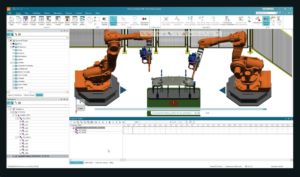
Healthcare crises often manifest in urgent ways—alarms ring, monitors beep, and medical staff rush to respond. However, not all emergencies are loud. Issues such as ineffective hospital asset management develop quietly, leading to significant financial losses and jeopardizing patient care. As hospitals increasingly adopt advanced technologies like surgical robotics and digital diagnostics, the challenge of efficiently managing physical assets—including infusion pumps and ventilators—remains largely overlooked.
The current state of asset management in hospitals is concerning. Research indicates that nearly 15-20% of hospital equipment is either misplaced or underutilized at any given time. In larger healthcare facilities, this can equate to hundreds of machines sitting idle while medical staff scramble to locate functioning equipment.
The implications of poor asset management extend beyond logistical challenges. Delays in diagnostics or treatments due to unavailable equipment can hinder patient care. Moreover, clinical staff often waste valuable hours searching for machines, contributing to burnout and dissatisfaction. Financially, hospitals face unnecessary expenditures in purchasing or renting equipment that is not optimally used. Compliance and safety can also be compromised if critical assets miss calibration or maintenance checks.
Despite the availability of advanced cloud-based tools and real-time analytics, many hospitals continue to rely on outdated methods for asset management, such as manual logs and Excel spreadsheets. This reliance on paper-based service records and siloed software systems invites human error, leading to discrepancies between maintenance data and actual equipment status. The core issue is not the lack of equipment but rather the absence of visibility and control.
The introduction of artificial intelligence (AI) into hospital asset management does not imply that robots will replace human technicians. Instead, AI can streamline operations through several key functionalities. Predictive maintenance utilizes algorithms to analyze usage patterns, alerting teams before equipment failures occur. Automated compliance ensures real-time updates on calibration schedules and service logs, alleviating the stress of audits. AI systems can also facilitate smart allocation of resources by identifying underutilized equipment and reallocating it where demand is highest.
Digital Twin Models, which create virtual replicas of physical infrastructure, enable better planning and forecasting, enhancing decision-making capabilities for biomedical engineers and hospital administrators. This technology amplifies human judgment rather than replacing it, allowing for quicker and more informed decisions.
While the potential financial savings from AI-driven asset management can be substantial—often amounting to millions of dollars annually through reduced downtime and optimized maintenance—the benefits extend beyond mere monetary figures. Improved operations can enhance staff morale and patient experiences significantly. For instance, when nurses do not need to leave a patient’s side to search for an infusion pump, and technicians can identify equipment failures before they disrupt surgeries, the overall healthcare environment becomes more efficient.
Before hospitals can fully harness the capabilities of AI, they must first change their perception of asset management. It should not be viewed merely as a backend issue but rather as a vital component that affects clinical outcomes across departments. Every patient’s wellbeing relies on equipment functioning correctly and being readily available. Consequently, discussions in hospital boardrooms about efficiency and budgets should include asset management alongside electronic health records (EHRs) and AI diagnostics.
As healthcare systems navigate the post-COVID-19 landscape, they face increased pressure to do more with fewer resources—less staff, tighter budgets, and greater patient demand. Innovation at the bedside cannot occur without addressing the backend systems that support it. While AI-driven asset management may not garner headlines like surgical robotics or telemedicine, it represents a crucial evolution that could prevent future silent emergencies in hospitals.
Attention to this area is essential for improving healthcare delivery and ensuring that hospitals can effectively respond to patient needs.
About the Author:
Sonali Mohanraj serves as a Digital Marketing Strategist at Proteger AI, where she focuses on bridging the gap between frontline care and operational technology. Her commitment lies in integrating intelligent solutions, such as Vajra Software, into the often-overlooked layers of hospital workflows, ultimately aiming for improved patient care through better systems.






